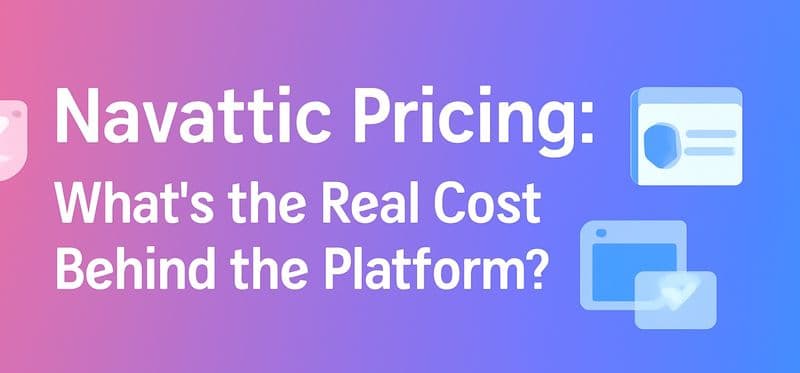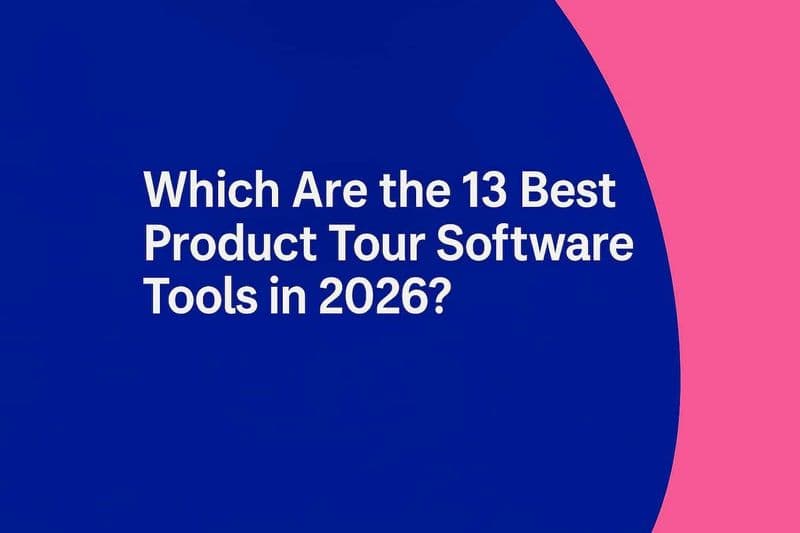Sales teams put in the effort to generate leads, build relationships, and close deals, yet many still struggle to hit quotas. Leads go cold, prospects walk away, and deals slip through the cracks—not because of a lack of effort but because sales reps aren't properly equipped to succeed.
A sales enablement plan solves this by providing a structured, actionable sales strategy that arms sales teams with everything they need—before they even realize they need it. When done right, sales enablement increases sales productivity, shortens sales cycle length, and drives higher win rates, ultimately benefiting the overall sales pipeline.
This blog breaks down why sales enablement strategies fail and provides a clear, 6-step strategy to build one that drives results. Learn how to equip sales teams with the right tools, content, and training to enhance your sales enablement efforts and close more deals—faster. Let's get started.
What Is a Sales Enablement Plan?
A sales enablement plan is more than just sales training—it's about making sure that your sales executives have the right tools, sales enablement content, and support exactly when they need them. It connects marketing and sales, streamlines access to key resources, and provides ongoing coaching so reps can focus on closing deals instead of searching for answers.
Think of it like this: A software developer trying to build a powerful app without the right frameworks, debugging tools, or documentation will hit roadblocks at every turn. Sales works the same way—without the right content, insights, and enablement tools, even top-performing reps will struggle to close deals efficiently.
4 Common Sales Enablement Mistakes That Cost You Deals
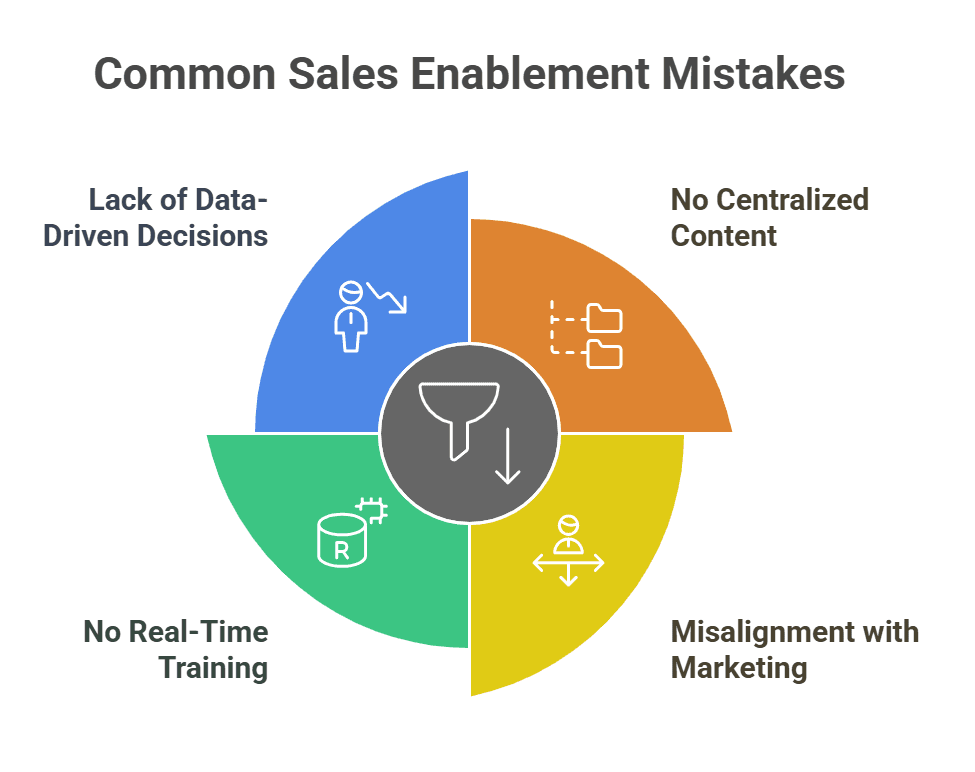
Even with a sales enablement plan in place, certain mistakes can slow down your sales enablement team and cost your revenue goals. Here are some of the common pitfalls:
1. No Centralized Content
If sales reps are wasting time digging through emails, Slack threads, or outdated folders for a pitch deck, they're already at a disadvantage. Key resources need to be organized and easily accessible in one place.
2. Misalignment with Marketing
When sales and marketing teams aren't in sync, prospects receive mixed messages. If marketing creates content that doesn't reflect real buyer conversations, sales reps are left with irrelevant or outdated materials that don't drive conversions.
3. No Real-Time Training
A one-time training session at onboarding won't prepare reps for the evolving challenges they face. Sales teams need ongoing coaching, call reviews, and real-time feedback to continuously refine their approach.
4. Lack of Data-Driven Decisions
Without tracking which content performs best, where deals stall, or what messaging resonates most, sales leaders miss opportunities to optimize their strategy and improve win rates.
Fixing these issues is essential for building a high-performing sales team that works smarter, sells faster, and wins more deals.
Also Read: How to Design an Effective SaaS Sales Funnel for Beginners
7 Steps to Create a Sales Enablement Plan That Actually Helps Your Team Sell
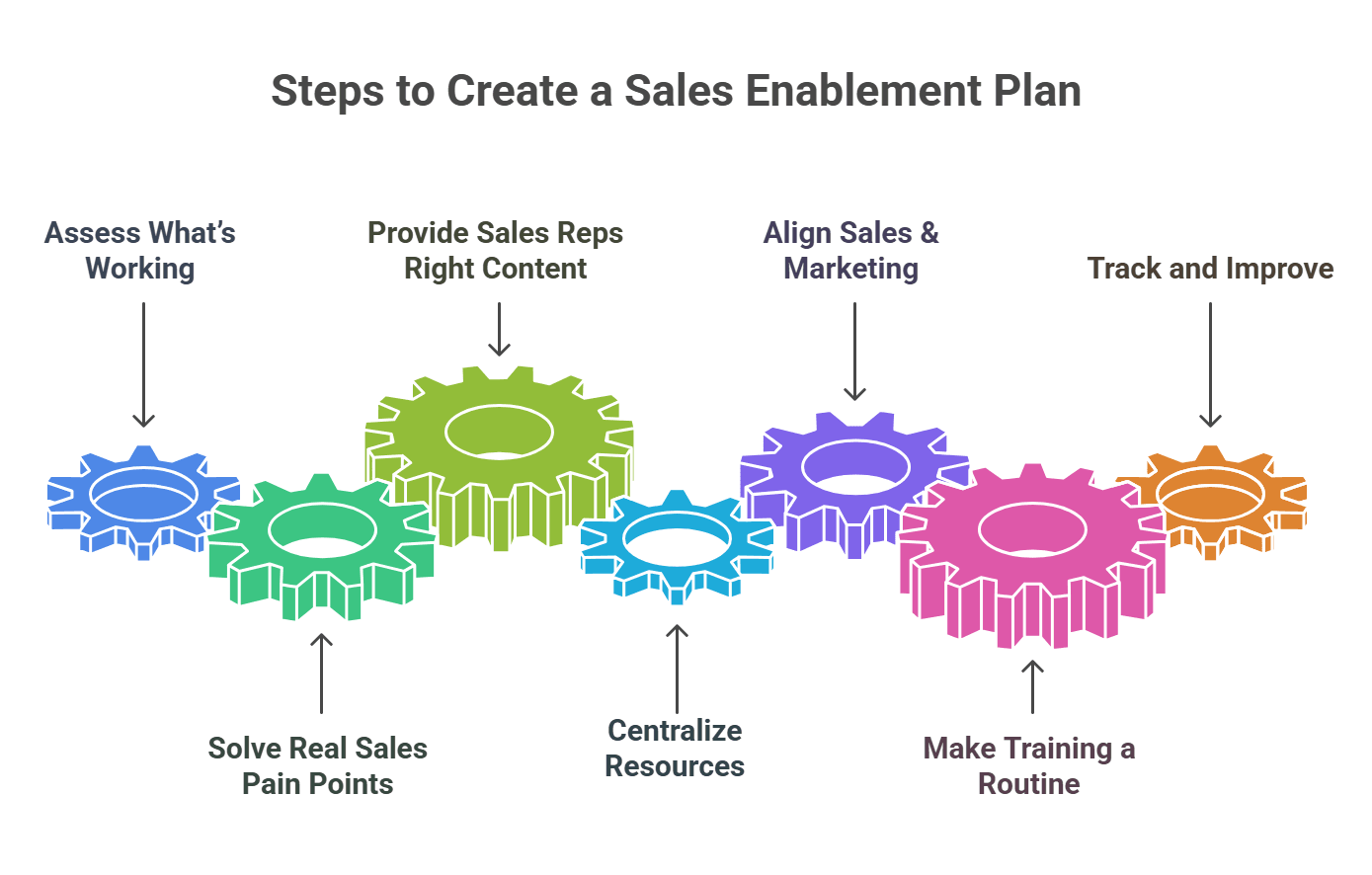
1. Assess What’s Working (And What’s Not)
Before making any changes, take a step back and evaluate where the gaps are. A strong sales enablement plan starts with identifying:
Skill gaps – Do reps need better training on negotiation or discovery calls?
Process bottlenecks – Are deals stalling because of approval delays or slow follow-ups?
Missing resources – Are reps constantly asking for case studies or better objection-handling guides?
Once you know what’s broken, set clear, measurable goals to fix it. For example:
Increase win rates by 15% in the next quarter
Reduce new hire ramp-up time by 30%
Improve sales content adoption by 50%
Getting buy-in from leadership, sales managers, and marketing at this stage ensures everyone is working toward the same objectives, maximizing the impact of sales enablement across the organization.
2. Solve Real Sales Pain Points
A sales enablement plan should make selling easier—not add more busy work. If it doesn’t solve real problems, reps won’t use it. Ask your team:
“Do you struggle to find the right content when you need it?”
“Are you losing deals due to weak objection handling?”
“Does marketing provide materials that don’t reflect real sales conversations?”
The answers will tell you exactly what needs to change. The best plans aren’t built in boardrooms; they’re built by listening to the people actually closing deals.
3. Give Sales Reps the Right Content—Internally & Externally
Sales reps rely on content every day, whether they’re learning a new pitch or guiding a prospect through the buying process. The problem? It’s often scattered, outdated, or irrelevant. Here’s what they actually need:
Internal Sales Content:
Sales guides with proven talk tracks
Objection-handling frameworks for real conversations
FAQ sections so reps can get quick answers on the go
External Sales Content:
Case studies and product demos tailored to buyer pain points
Infographics and one-pagers that simplify complex ideas
Email templates and scripts for smoother outreach
Review what you already have, repurpose high-performing marketing materials for effective sales enablement, and make sure every piece of content is built for the real-world buyer journey.
4. Centralize Everything (So Reps Can Actually Find It)
If your sales team has to dig through Slack, email threads, and random Google Drive folders to find what they need, they won’t use it. A single, easy-to-navigate content hub is a game-changer.
A searchable content library with updated decks, scripts, and case studies
A knowledge base for competitive insights and objection-handling guides
A structured folder system (or tools like Notion or Seismic)
If finding content feels like a scavenger hunt, deals will suffer. Make it effortless for reps to grab what they need in seconds.
5. Get Sales & Marketing on the Same Page
When sales and marketing aren’t aligned, buyers get mixed messages—and that kills deals. Sales says one thing, marketing’s content says another, and prospects get confused. To fix this:
Hold bi-weekly sales-marketing check-ins to keep messaging sharp
Track which content actually leads to conversions—so marketing knows what works
Ensure consistency across all touchpoints—from the first email to the final pitch
When sales and marketing work together, reps get better materials, better messaging, and better results.
6. Make Training a Daily Habit, Not a One-Time Event
I’ve sat through full-day training sessions before. A week later? I remembered maybe 20% of it. That’s why one-off training doesn’t work. Instead, bake learning into the daily workflow with:
Bite-sized training modules that reps can access on demand
Call coaching tools like Gong or Chorus for real-time feedback
Role-play exercises so reps can master objection-handling before it matters
Sales coaching should be ongoing, interactive, and built into their routine. The better prepared they are, the more confident (and effective) they’ll be during the sales process.
7. Track, Measure, and Continuously Improve
A sales enablement plan isn’t a “set it and forget it” strategy. If it’s not moving the needle, it’s just extra work with no impact. Keep an eye on:
How often reps use enablement content (if they’re not, it’s useless)
Win rates before and after implementation (does it actually help close deals?)
Ramp-up time for new hires (the faster they get productive, the better)
Sales enablement should be a living, evolving strategy—not a one-time project. Keep optimizing based on what’s working (and what’s not).
Also Read: How to Build a Winning Sales Strategy for SaaS
How SmartCue Makes Sales Enablement Effortless
Building a sales enablement plan is one thing—getting reps to actually use it is another. SmartCue bridges that gap by giving sales teams instant access to the right tools, content, and insights when they need them most.
Here's how SmartCue makes sales enablement seamless:
Interactive Product Demos – No more generic pitches. SmartCue lets reps tailor demos on the go, showing prospects exactly what matters to them.
Real-Time Content Access – Whether it's a pitch deck, case study, or objection-handling script, reps get what they need—without digging through folders.
Seamless CRM Integration – SmartCue fits right into your sales workflow, ensuring reps stay focused on selling, not searching for resources. amidst potential customer interactions.
Data-Driven Insights – See what works and what doesn't, and optimize sales enablement based on real engagement data.
With SmartCue, your sales team spends less time preparing and more time closing deals. Stop letting lost opportunities slip through the cracks, instead enable your team with SmartCue for sales success.
See SmartCue in action—Book a live demo today!
How to Use SmartCue for Seamless Sales Enablement
SmartCue simplifies the sales enablement process by equipping your team with the right tools to deliver personalized, impactful demos. Here's a step-by-step guide to using SmartCue to enhance your sales performance and close deals more efficiently.
Step 1: Get Started
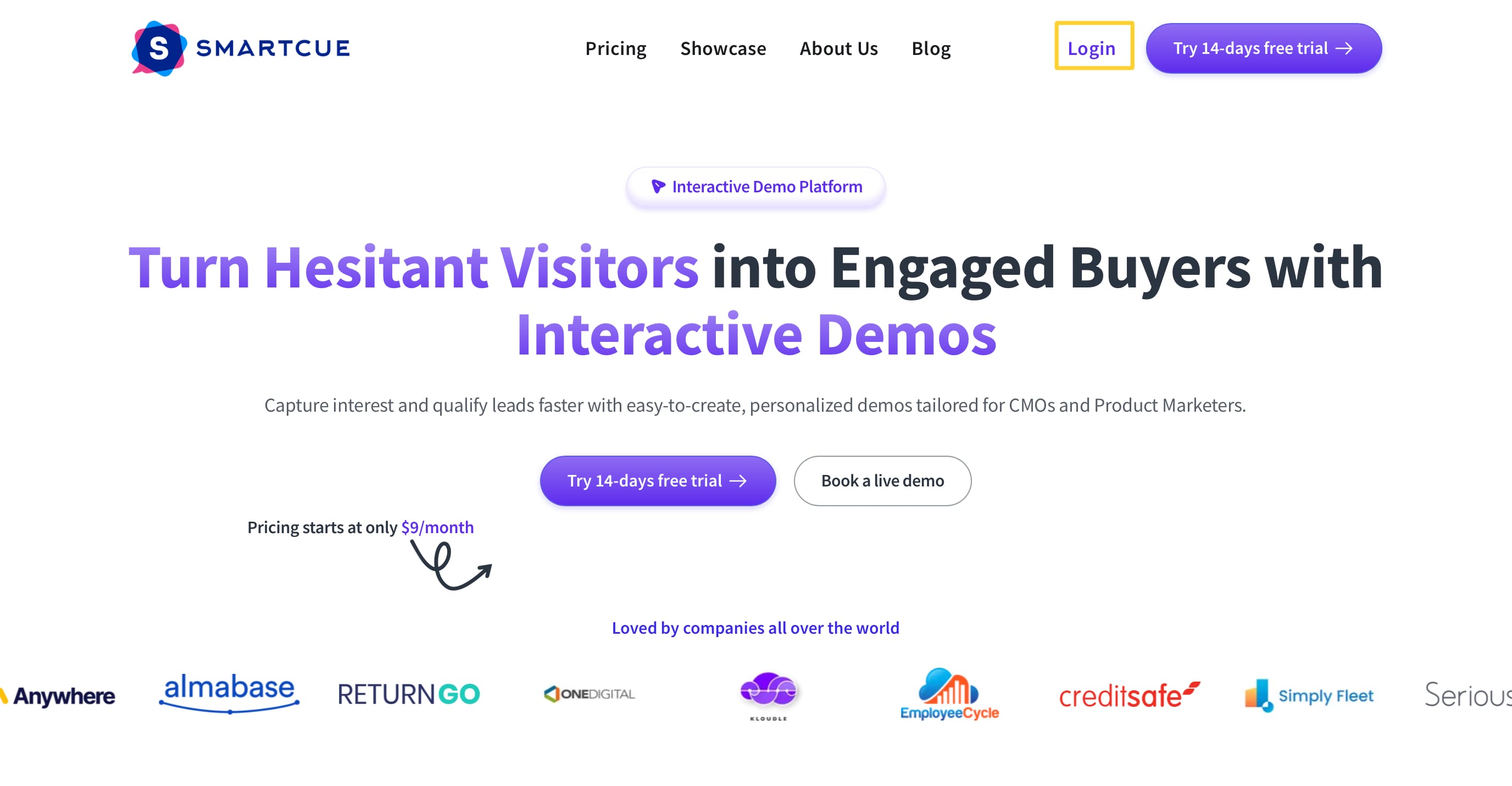
Sign up for a free trial and login to explore SmartCue's user-friendly dashboard.
Step 2: Set Up Your Showcase
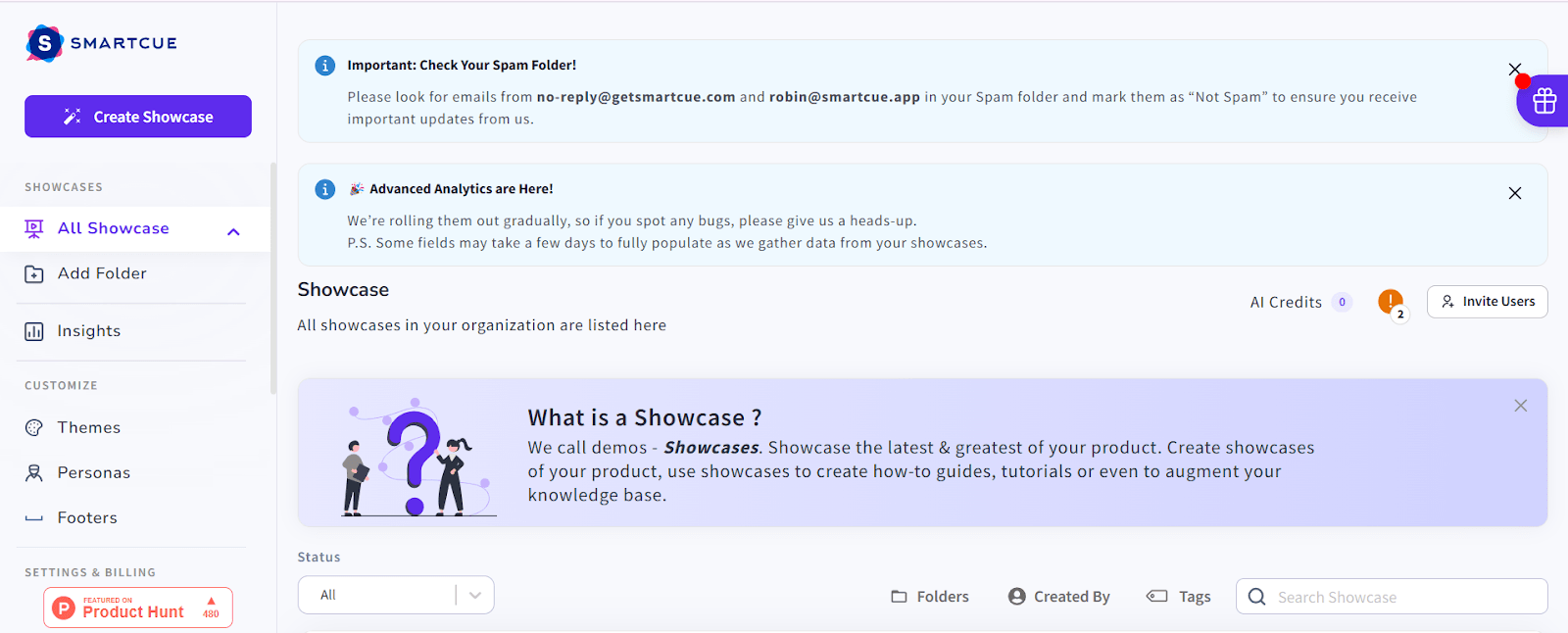
Easily create a new showcase by uploading content manually or using extensions.
Step 3: Customize Your Showcase
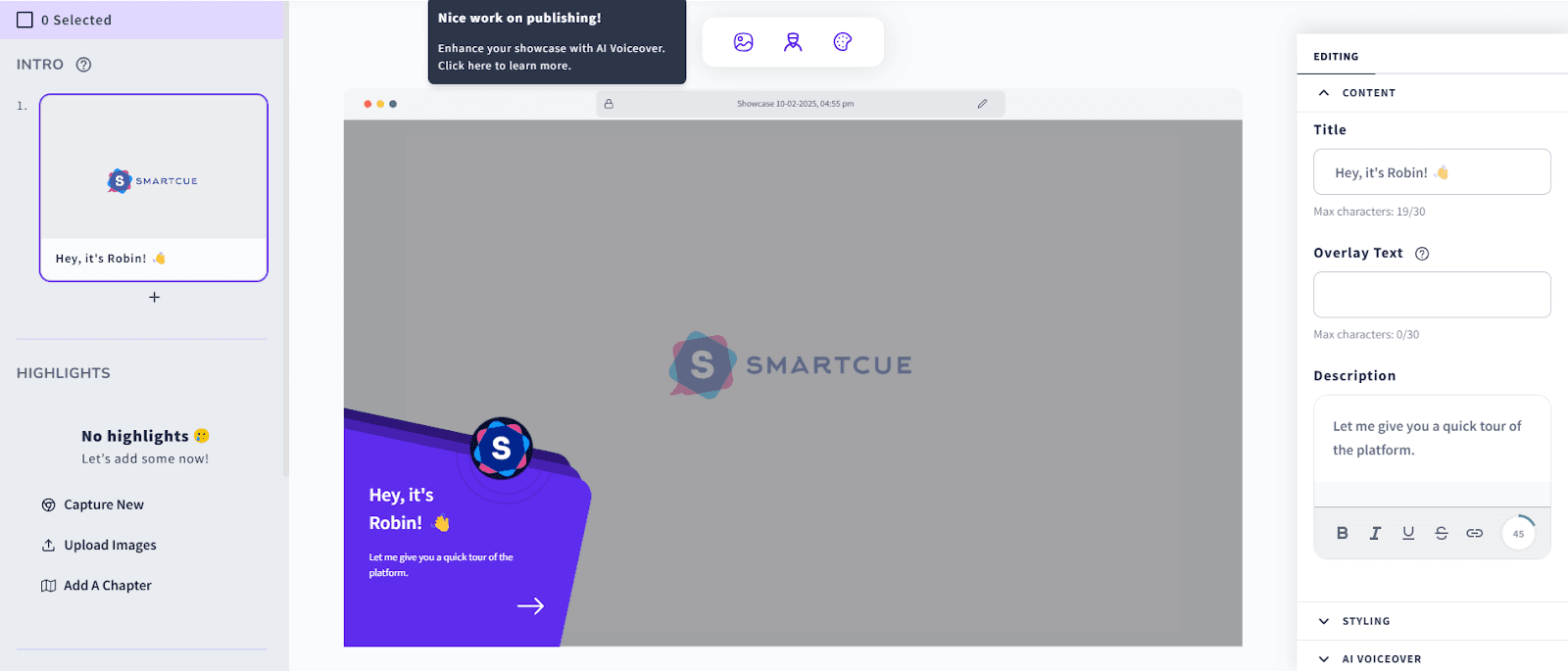
Enhance your presentation with text descriptions and built-in tools to make it more engaging.
Step 4: Publish & Share
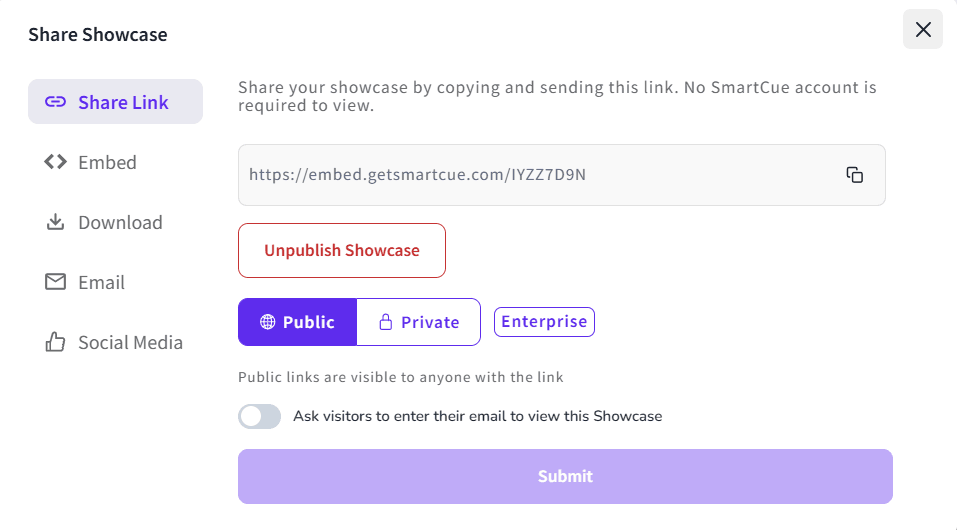
Once you're satisfied with your showcase, hit Publish to save and share it with your sales team.
Frequently Asked Questions
What's the biggest reason sales enablement plans fail?
Many sales enablement initiatives fail because they aren't built with sales reps in mind. If content is hard to find at the right time, training is a one-time event, and marketing and sales aren't aligned, reps won't use the resources, leading to lost deals.
How often should a sales enablement plan be updated?
Sales enablement is not a one-and-done onboarding process. For successful sales enablement, continuous learning, following best practices and regular updates based on sales feedback, performance data, and evolving buyer needs help keep the strategy relevant and effective. A quarterly review is a good starting point.
What tools can improve a sales enablement plan?
Key tools include a content management system (so reps can easily find materials), customer relationship management (CRM) integration (to streamline workflows), call coaching software (for real-time feedback), and demo platforms like SmartCue (to deliver tailored product presentations) that enhance customer experience, customer service and improve buyer engagement, ultimately leading to better conversion rates.
How can sales and marketing work better together on sales enablement?
Aligning sales operations and marketing efforts starts with regular communication. Joint meetings for sales enablement program, shared KPIs, and tracking relevant content performance help ensure that marketing creates materials reps actually use, and that sales professionals deliver a consistent message to prospects, for greater customer satisfaction.

